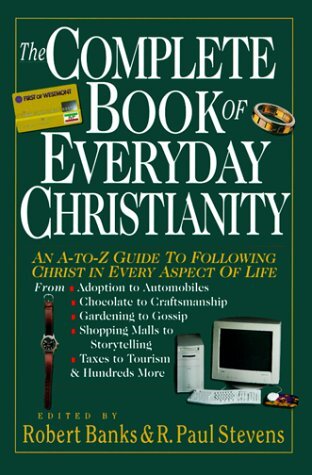City
Book / Produced by partner of TOW
The city is a fascinating, complex and dominating fact of contemporary life. An increasing number of the world’s population are city dwellers. It would be rare to find someone who has not had firsthand experience of the city, and impossible to find someone whose life is beyond the reach of the city and its influences. But what are we to make of the city? And what is the city to make of us?
The City in Western Culture
The city has provoked a range of attitudes and commentaries. On the one side, the city has been celebrated as the seat of civilization and the crucible of high culture. It is associated with enlightened minds, innovation and social progress. On the other side, the city has been portrayed as promoting social pathology and moral disorder, the very antithesis of community, kinship ties and family values. Invariably, the city is contrasted for better or worse with the culture of the countryside (see Community, Rural; Towns).
The language of the city in Western culture draws deeply on the legacy of the Greco-Roman world. The English word city derives from Latin terms having to do with membership of the citizenry (civitas) and with the individual citizen (civis). Concepts such as freedom, public citizenship and political democracy lean heavily on the philosophy and polity (polis) undergirding the ancient Greek city-state. The latter was broad enough to incorporate the city and its hinterland as a political unit, but over time the concept of citizenship in the polis became associated with the public life of the urbs, the city, and the urbane qualities of the free citizen of good taste and sound judgment. These qualities of city life seem today to be lost in the fog of a past era. We are more accustomed to the pejorative language of “blight,” “decay,” “problem” and “crisis.” As goes our language, so go our perceptions. What are we to make of the urban social upheaval that is transforming our cities?
A Matter of Perspective
It is a remarkable experience to fly into any major city at night. One gets a sense of the city as a whole, without distraction. Benign as it appears from such a height, however, what we observe is already filtering through the lens of what we think, judge, want and expect the city to be. Once at street level, we can grasp the whole city only with an act of the imagination. Our imagination is fueled by reports of events that lie outside our immediate field of observation. Such external reports collude with our hopes and fears, dreams and aspirations, needs and desires. They help shape our image of the city. This is true also when it comes to the attitudes and judgments we make about other people and places in the city based on our limited personal experience. Experience is never unmediated or free of the assumptions and biases of the interpreter. However, as we open ourselves to the experiences of the city with a view to encountering its rich diversity, so we receive wisdom and insight from surprising places, causing us to shift our perspective and our accustomed ways of thinking and acting. Since we possess the city as a whole only in our imagination, we must remain open to the experiences and observations of others, especially to the “other,” the strange and the stranger.
City living is the art of constructing mental maps by which to integrate and order the myriad impulses of the city. These maps enable us to negotiate our way in a complex and constantly changing environment. We scan the city as a landscape, and translate it like a text. City living is like learning a language, replete with cultural nuances and the collective wisdom and experience of generations.
Received Wisdom About the City
The biblical images of the city demonstrate the range of attitudes noted above. On the one hand the city is depicted in the Bible as the center of apostasy, injustice and self-aggrandizement, characterized by Babylon, a city of rampant evil. On the other hand, the city is characterized as Jerusalem, a place of God’s dwelling, governance, protection and promise of a future full of hope and healing. In reality, the biblical vision of the city incorporates both characterizations. It is the home of sinner and saint, of grit and grace. Above all, it is the primary locus within which the biblical drama unfolds. As has often been noted, the biblical journey begins in the garden, moves to the city, spreads from city to city and culminates in the vision of a garden transformed into a city.
The city in our times differs in fundamental ways from the cities of the Bible, from ancient Greece and Egypt, and from those of medieval Europe. One important difference is the degree of visibility of the whole as noted above. The modern city is in fact a composite of many worlds. Increasing specialization of function brought about by modern technology underlies the wealth of individual worlds found in the modern city. We construct our lives in the city in unique ways out of the many options that the city provides.
It is common wisdom to characterize the modern industrial city by the metaphor of the machine. In the modern city the person is more nearly a part of a machine than a whole personality, fitted to fulfill a particular task with the appropriate frame of mind. This specialization of the person prompts the observation that the modern person is fragmented. We meet in the city the fragments of persons rather than whole persons. Not only is the city fragmented through the intense differentiation of human affairs, but the city dweller is fragmented by a thoroughgoing specialization in which each brings to their specialized activities only the fragment of themselves, the part which is needed for the efficient performance of that activity.
As we move steadily into the postmodern, postindustrial stage of urban society, cities are themselves becoming specialized institutions within a broad network of cities. The increased capacities of information technology to span space and time in nanoseconds undermines the tendency of bygone cities to determine the entire round of life of its inhabitants. Cities are integrated into a much larger complex, national, regional and global (see Global Village). Paradoxically, the globalizing of the city has also seen a resurgence in localism and the investment by people in the life of the neighborhood.
Can the biblical treatment of the city make sense in the postmodern city of our times? Without a doubt we are all familiar with the sinfulness of our cities, etched into the very fabric of our corporate culture, and menacing the well-being of individuals, families and communities. This much has not been changed. But the gospel message sounded in the city, to the city and through the city remains the same: where sin abounds, the grace of God abounds all the more. This is a challenge for us to recover a spirituality adequate to the needs and opportunities of our times.
An Urban Spirituality
What does it mean for us to live in the city as disciples of Jesus Christ? What is the good news for everyday life? How does the city build our humanity as creatures before God?
At his conversion, Saul was instructed to “get up and enter the city, and you will be told what to do” (Acts 9:6 RSV). A spirituality adequate to the challenge of urban discipleship today will make a similar metaphorical journey of conversion. This spirituality has the elements of liturgical celebration, where liturgy fulfills its literal meaning as “the work of the people.”
To begin with, we are challenged to get moving, to arise and step toward the city. Let me suggest that this is not a movement so much from outside to inside the city as from passivity to activity within the city appropriate to the invitation of God. And what is this invitation? It is the gracious beckoning to step into the place of pain and temptation in the struggle for the soul of the city. It is not the call to either precipitate our own action in response to a deep sense of guilt and culpability over our participation in the injustice and brokenness of the city, nor to attempt to break through the feeling of powerlessness by an aggressive activism. Rather, it is the invitation to “follow Jesus,” through liturgical identification, into the very place of action where the full force of evil assails us, threatens to destroy us, but is forced to yield to the resurrection power of new life.
This movement of paying attention to the invitation of God will enable us to “enter” the city, that is, to enter into a profound awareness of the mysterious presence of God as grace active in all our dealings and relations within the city. To enter is to become aware and more keenly discerning of the movement of God in and through the city.
Then we are ready to hear the voice of God which addresses us in the very act of paying attention—to God, to the city, to the community and to ourselves. As we move in concert with God in the city, we are told what we are to do. As we do what we are told, we discover again and again the grace of God’s transforming passion for the city, and the sustaining power of the divine life in our own lives and communities. And out of this spirituality of engagement and discernment we are led to celebrate the festival nature of the kingdom of God in the city. We rejoice that God is in the business of transforming urban culture and celebrate the anticipations of the future city in our present cities. We celebrate the gifts of creativity and the imitations of the presence of the Creator in moments of justice for the powerless, hospitality to strangers, equality for the underprivileged and recovery of dignity for the degraded. For such is the city of God.
References and Resources
R. Bakke, The Urban Christian: Effective Ministry in Today’s Urban World (Downers Grove, Ill.: InterVarsity Press, 1987); D. Callahan, ed., The Secular City Debate (London: Collier Macmillan, 1966); D. Clarke, Cities in Crisis: The Christian Response (New York: Sheed and Ward, 1960); H. G. Cox, The Secular City: Secularization and Urbanization in Theological Perspective (London: SCM Press, 1965); K. B. Cully and F. N. Harper, eds., Will the Church Lose the City? (New York: World Publishing, 1969); J. Ellul, The Meaning of the City (Grand Rapids: Eerdmans, 1970); C. S. Fischer, To Dwell Among Friends: Personal Networks in Town and City (Chicago: University of Chicago Press, 1982); P. S. Hawkins, ed., Civitas: Religious Interpretations of the City (Atlanta: Scholars Press, 1986); L. Mumford, The City in History: Its Origin, Its Transformations and Its Prospects (New York: Harcourt Brace and World, 1961).
—Ken Luscombe





